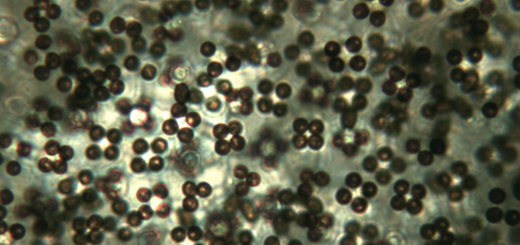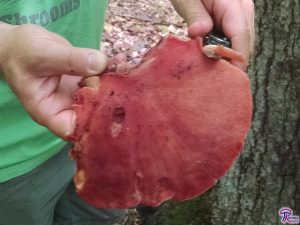#015: Characteristics of Phylum Glomeromycota [Archived]
Note: This is an archived post. You can find the current version of this post here.
The Glomeromycota are all fungi which form arbuscular mycorrhizae (AM). Mycorrhizae are a type of mutualism with plants where the fungus gets sugars and gives up hard-to-extract nutrients (especially phosphorous). AM fungi accomplish this by forming structures within the plant’s root cells while not causing a disease reaction. Most land plant species form AM, and only a few families are considered non-mycorrhizal. AM fungi tend to be generalists, colonizing a variety of different plant species. Each plant is usually colonized by multiple AM species. This mycorrhizal network has a variety of different roles in an ecosystem. It supplies nutrients to plants, determines what species make up an ecosystem’s plant community, and allows other plants (like orchids and Indian pipe) to parasitize larger plants via the network. A recent study has also suggested that plants use AM fungi to communicate with their neighboring plants. For more on AM, see FFF#074. Only one fungus (Geosiphon pyriformis) is known to not form AM. Instead, pyriformis is symbiotic with cyanobacteria.
Additionally, glomeromycota are obligate symbionts, meaning they cannot grow without their host. Another feature common to all glomeromycota is that they do not reproduce sexually. One way in which glomeromycota reproduce is to form thick-walled spores which contain hundreds to thousands of nuclei. When conditions are right, the spores germinate and immediately infect a root cell. Another way is for small pieces of mycelium to contact a new root and form a new AM network. The fungus can also spread by colonizing multiple plants at the same time. A final characteristic shared by the glomeromycota is that their hyphae are aseptate, meaning that their hyphae are not divided into cell-compartments. Glomeromycota was only recently established as a phylum, separating it out of the old, polyphyletic phylum zygomycota. The glomeromycota are a monophyletic group which probably diverged from a common ancestor with the asco- and basidiomycota. Improved DNA techniques are helping us to better understand this phylum and its phylogenetic relationships.
See Further:
http://tolweb.org/Glomeromycota
http://comenius.susqu.edu/biol/202/fungi/glomeromycota/default.htm
http://www.intechopen.com/download/get/type/pdfs/id/30807 (long and more technical)








![#011: Characteristics of Kingdom Fungi [Archived]](https://www.fungusfactfriday.com/wp-content/themes/hueman/assets/front/img/thumb-small-empty.png)


1 Response
[…] For more on the phylum Glomeromycota, see FFF#015. […]